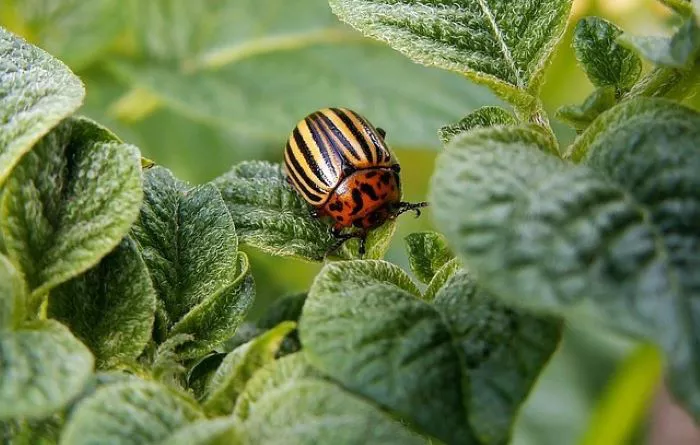Gardening is a rewarding hobby that brings joy and beauty to our lives. However, it can also come with challenges, particularly when it comes to pests. Garden pests can damage plants, reduce yields, and even spread diseases. Understanding how to deter pests is essential for maintaining a healthy garden. This article will explore effective strategies to prevent and manage pests in your garden.
Understanding Garden Pests
Pests can be classified into several categories, including insects, rodents, and larger animals. Common garden pests include aphids, slugs, snails, caterpillars, and various beetles. These pests can feed on leaves, stems, and roots, leading to stunted growth and even plant death. Recognizing the types of pests in your garden is the first step in developing an effective pest management strategy.
Creating a Healthy Garden Environment
A healthy garden is less susceptible to pests. Here are some practices to promote plant health and resilience.
Soil Health: Start with healthy soil. Enrich your soil with organic matter, such as compost. This improves soil structure, nutrient availability, and water retention. Healthy plants grown in nutrient-rich soil are more resistant to pests and diseases.
Diversity: Plant a diverse range of species. Biodiversity can confuse pests and reduce their populations. Companion planting, where certain plants are grown together for mutual benefit, can also deter pests. For example, planting marigolds alongside vegetables can help repel nematodes and aphids.
Proper Watering: Overwatering can create a perfect environment for pests like fungus gnats and root rot. Water your plants early in the day to allow excess moisture to evaporate. Use drip irrigation or soaker hoses to minimize water on foliage.
Cultural Practices for Pest Management
Cultural practices involve methods that promote plant health and reduce pest attraction. Here are some effective strategies.
Crop Rotation: Rotate crops each season to disrupt pest life cycles. Many pests are specific to certain plant families. By changing the location of plants, you can reduce the chances of pests returning.
Sanitation: Keep your garden clean. Remove dead plants, fallen leaves, and debris that can harbor pests and diseases. Regularly inspect your plants for signs of pests and take prompt action if you notice any issues.
Timing: Plant at the right time. Some pests are more prevalent during specific seasons. By timing your planting, you can avoid peak pest populations. Early planting can help crops establish before pests become a problem.
Physical Barriers
Physical barriers can be highly effective in preventing pest access to plants. Here are some common methods.
Row Covers: Use lightweight fabric row covers to protect young plants from insects. These covers allow sunlight and moisture to penetrate while keeping pests out. Ensure that the edges are secured to prevent pests from entering.
Netting: Use fine mesh netting around fruit trees and berry bushes to protect them from birds and larger pests. This barrier allows air circulation while keeping unwanted animals away.
Fences: Erect fences to deter larger animals like deer and rabbits. A fence should be tall enough to prevent jumping and buried a few inches underground to stop burrowing animals.
Natural Deterrents
Many natural substances can deter pests without harming plants or beneficial insects. Here are some options to consider.
Essential Oils: Certain essential oils, such as peppermint, lavender, and neem, can repel pests. Mix a few drops of essential oil with water and spray it on affected plants. Always test on a small area first to avoid damaging the foliage.
Garlic Spray: Garlic is known for its pest-repelling properties. Blend garlic cloves with water and strain the mixture. Spray it on plants to deter aphids, caterpillars, and other pests.
Hot Pepper Spray: Similar to garlic, hot pepper spray can deter many pests. Mix crushed red pepper or cayenne pepper with water and spray it on plants. The spicy taste can repel insects.
Encouraging Beneficial Insects
Beneficial insects can help control pest populations naturally. Here are ways to attract and support these helpful allies.
Plant Flowers: Grow a variety of flowering plants that attract beneficial insects, such as ladybugs, lacewings, and parasitic wasps. Flowers like dill, fennel, and yarrow are excellent choices.
Provide Habitats: Create habitats for beneficial insects by leaving some areas of your garden wild. Piles of leaves, logs, and stones can provide shelter for predatory insects.
Avoid Pesticides: Reduce or eliminate the use of chemical pesticides. These can harm beneficial insects along with pests. If you must use pesticides, choose targeted options that minimize harm to non-target species.
Monitoring and Management
Regular monitoring is essential for effective pest management. Here are some practices to keep in mind.
Regular Inspections: Check your plants frequently for signs of pests or damage. Early detection allows for prompt intervention, preventing larger infestations.
Sticky Traps: Use yellow sticky traps to monitor flying insect populations. These traps can help you identify pest problems early and determine the effectiveness of your deterrent strategies.
Threshold Levels: Establish threshold levels for pest populations. Determine how many pests you can tolerate before taking action. This approach helps prevent unnecessary interventions and supports beneficial insects.
Conclusion
Detering pests from your garden requires a combination of strategies that promote plant health and resilience. By creating a healthy environment, employing cultural practices, using physical barriers, and encouraging beneficial insects, you can effectively manage pest populations. Regular monitoring and timely interventions are crucial for maintaining a thriving garden. Embrace these practices to protect your plants and enjoy the beauty and bounty of your garden. With dedication and care, you can create a pest-resistant garden that flourishes year after year.


